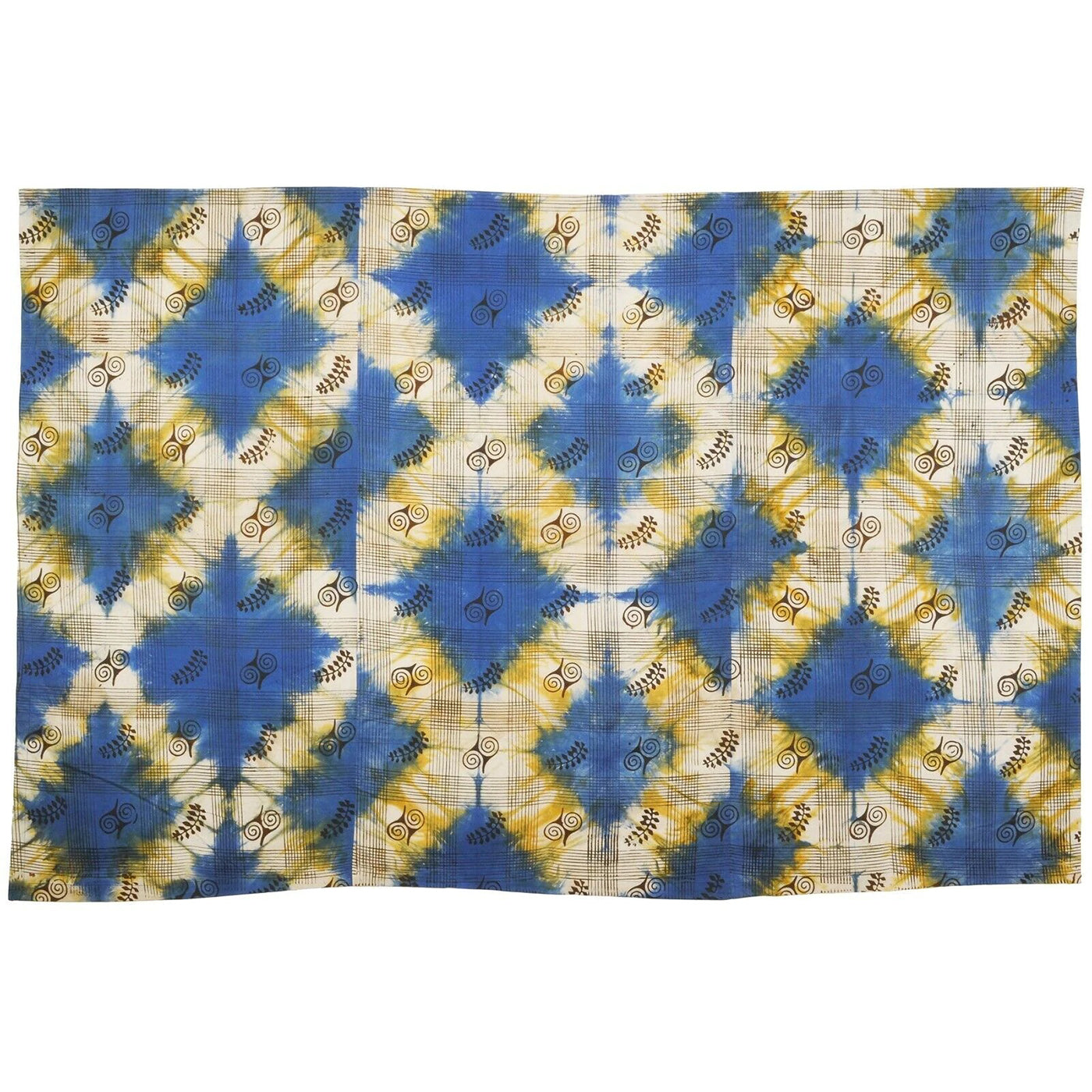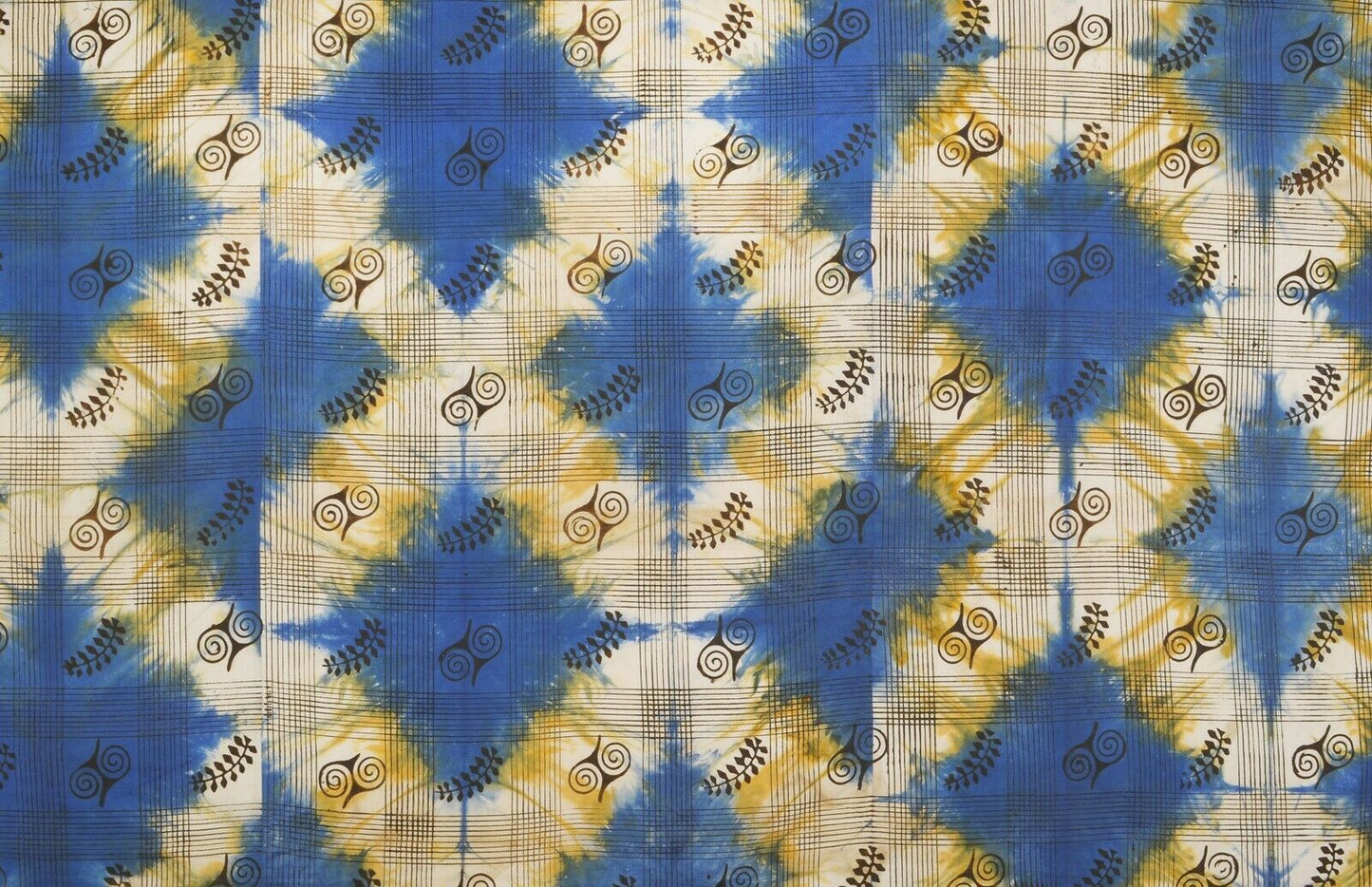Tribalgh
Hand Stamped Adinkra Batik Tie Dye Cloth | Vintage 1990s Ashanti
Hand Stamped Adinkra Batik Tie Dye Cloth | Vintage 1990s Ashanti
Item number:
SKU:SD-30933
Check shipping cost
Check shipping cost
Standard shipping cost for this item is $ 9.95
Insured "AIR MAIL" anywhere in the world.
Delivery time for Europe is 7-14 working days.
Delivery time for USA and the rest of the World is 14-21 working days.
We combine shipping on multiple purchases!
DHL option available for faster delivery ( 2 - 4 working days ) to all over the world.
During your checkout you will be able to see cost and select DHL option.
FREE upgrade to DHL for orders over $ 200
Couldn't load pickup availability
Hand Stamped Adinkra Batik Tie Dye Cloth – Vintage 1990s “Woman” Size
- Size: 93 ¼″ × 61 ¾″ (235 cm × 157 cm)
- Condition: Very good vintage with minor stains and natural wear
This is a stunning, authentic 1990s Hand stamped Adinkra cloth featuring a vibrant batik tie‑dye base adorned with traditional Adinkra symbols. Each motif is individually hand‑painted and hand‑embossed using calabash‑carved stamping blocks. The cloth is stitched together with care, reflecting genuine Ashanti craftsmanship.
The dye is made from the bark of the “badie” tree, cooked with iron slag for several days to achieve its rich, natural tones. This is true artisanal work, with no machines used only human skill and dedication in every stage of creation.
How This Batik Tie‑Dye Cloth Was Created:
- Melt wax over fire
- Carve motifs from foam to create symbolic stamps
- Dip motifs into wax and hand-stamp the fabric
- Wash the cloth in cold water
- Dye the cloth in natural badie bark dye for about 30 minutes, with careful hand movement
- Hang to oxidize and develop color
- Repeat stamping and dyeing steps as needed for additional symbols
- Remove wax in hot water (wax is saved for reuse)
- Final wash and dry to complete the piece
The legend behind the term “Adinkra” traces back to Nana Kofi Adinkra, a Gyaman king captured by the Asante. He wore patterned cloth during his journey to Kumasi, symbolizing his sorrow. From that moment onward, Adinkra cloth became a symbol of emotion, history, and cultural identity.
About Adinkra Cloths
Adinkra cloths are traditional textiles from the Ashanti‑Akan people of Ghana and Ivory Coast. They are never hand‑woven in this form—they are always hand‑stamped with symbolic motifs that represent proverbs, beliefs, social values, and aspects of nature.
Adinkra Symbols and Their Meanings: Each symbol carries a specific concept—for example, “Gye Nyame” (except for God) symbolizes the supremacy of the divine, while “Sankofa” (go back and fetch) urges learning from the past.
Symbolic Color and Materials: Traditionally, Adinkra cloths are colored using natural dyes like badie bark, producing deep browns and blacks. The hand‑stamping material is often carved from calabash or foam dipped in wax for batik processes.
Stamping Process: The craftsmanship involves carving stamps, applying wax or dye by hand, washing, dyeing, waxing again, and finally removing wax to reveal the designs. It is labor‑intensive and imbued with cultural expertise.
Uses Among the Ashanti: Adinkra cloths are culturally significant at funerals, celebrations, and social gatherings. They serve as expressions of mourning, respect, identity, and celebration.
History of Adinkra Cloth in Ghana: Originating centuries ago among the Akan people, particularly the Ashanti, Adinkra stamped cloths evolved from royal attire into widely used textiles. The craft was renewed in the late 20th century, with modern adaptations like this batik tie‑dye version appearing in the late 1980s and 1990s.
This cloth from the 1990s embodies traditional techniques and cultural meanings. It is hand‑stamped, not hand‑woven, preserving its authenticity and artisanal value.
Discover more of our handcrafted collections:
- Adinkra stamping blocks collection – perfect for crafting your own symbols
- Jewelry featuring Adinkra symbols – wear the heritage
- Educational blogs about Adinkra symbols – explore their meanings and history
Share




